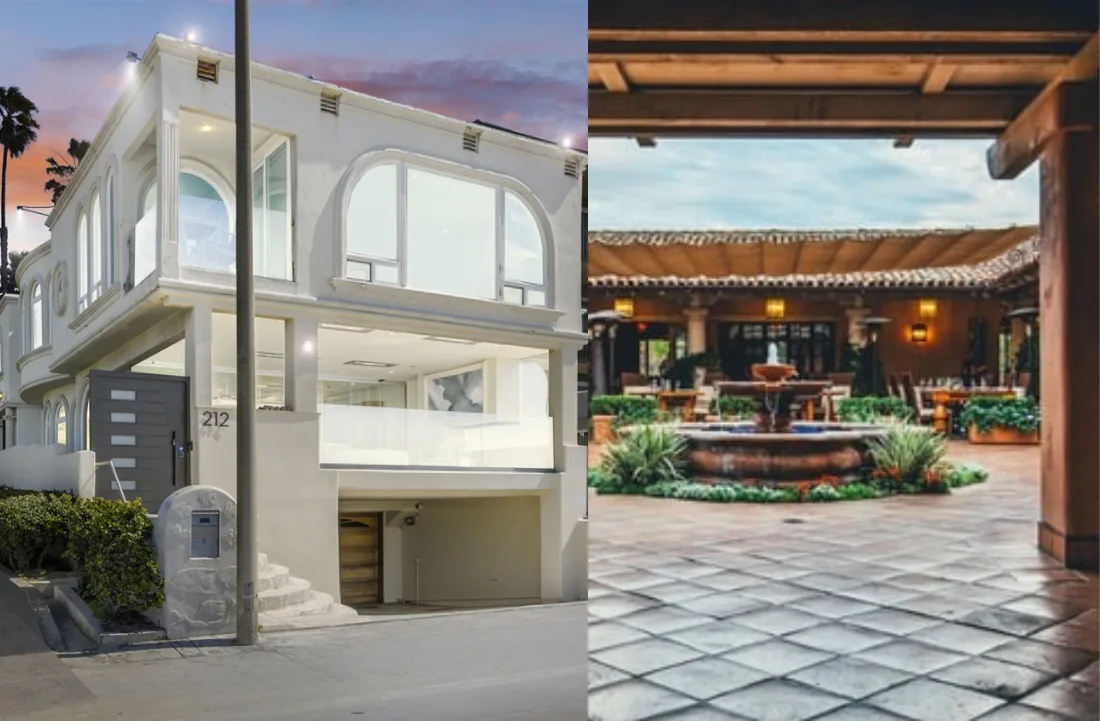Design-Build vs Traditional Remodeling: Which Is Best for Your La Jolla Home?

Summary
When planning a home remodel in La Jolla, homeowners typically have to choose between the design-build and traditional delivery methods. The design-build is an integrated method where a single team handles the entire remodeling process, from planning to permits and construction. At the same time, the traditional approach separates the project into two phases (design and construction), with different teams handling each phase.
While both options are good depending on your needs, budget, and vision, the design-build approach is best for a La Jolla home as it prioritizes quality delivery over cost saving.
Table of Contents
Introduction
When planning a home remodel, homeowners usually have a choice of design-build vs traditional remodeling approaches. Understanding the differences between these two popular remodeling methods can help you make the best decision for your home, budget, and overall experience.
These two approaches have their advantages and disadvantages. In this article, we will break down those approaches, examine their key differences, pros and cons, and finally help you choose the one that best aligns with La Jolla home remodeling trends.
What Is Design-Build Remodeling?
The design-build method is a streamlined approach to construction where one company manages both the design and construction aspects of your project under a single contract. This means that instead of hiring an architect and a general contractor separately, you get a team that has both capabilities to handle your entire remodeling process.
Apart from design and construction, some design-build companies, such as House to Home, provide project managers and site coordinators who regularly inspect your project to ensure that everything is proceeding according to your vision.
This method enhances collaboration, effectively accelerating timelines, and minimizing miscommunication, and is a cost-effective way of handling remodeling projects.
Key characteristics of the design-build method include:
- Single Contract: Instead of separate contracts for both the design and construction, the owner enters into a single contract with the design-build team, which eliminates delays, miscommunication, and cost overruns.
- Single Point of Responsibility: There is a single point of responsibility, with one team in charge of every aspect of the remodeling process, including design, permitting, budgeting, and construction.
- Improved Collaboration: Since designers and builders are part of the same team, this will enhance creativity, problem-solving, communication, and reduce delays.
What Is Traditional Remodeling?
Traditional remodeling, also known as the design-bid-build method, is the more conventional approach to home renovation. In this model, the homeowners hire the designer and architect first to create detailed plans, which are then sent to contractors for them to submit their bids.
Unlike the design-build method, this approach requires working with two separate companies: one for the design phase and another for the construction phase.
With this delivery method, you will have direct and complete control over who you work with. You will review bids from multiple contractors and choose the one you want for each stage of the project. This approach also gives you control over cost and budgeting, as costs will vary per bid.
In some cases, you may secure a lower overall price by focusing on competitive bidding and selecting the lowest offer. Traditional remodeling prioritizes upfront cost savings over high-quality project execution and delivery.
Key characteristics of traditional remodeling include:
- Separate design and construction phases: The project is divided into two distinct phases, with a designer and architect creating the plan and a builder implementing it. Both phases occur independently of the other.
- Emphasis on cost savings: This approach prioritizes upfront cost savings by allowing for competitive bidding, thereby enabling homeowners to optimize their budgets. Homeowners can then decide to choose the lowest bid or the one that gives the best value for money.
- Design flexibility: Although this can lead to an increase in price, traditional remodeling allows for flexible design, albeit with limitations on changes that can be made before construction begins.
- Longer timelines: Due to the separate phases for design and construction, as well as the potential for design changes and miscommunication, your remodeling project may take longer to complete.
Comparing Design-Build vs Traditional Remodeling
Choosing between the design-build and traditional remodeling methods can significantly impact your home remodeling experience, especially if you plan to capitalize on specific La Jolla home remodeling trends.
1. Key Differences Between Design-Build vs Traditional Remodeling
| Features | Design-Build | Traditional Method |
|---|---|---|
| Project structure | Homeowners hire a single team with design and construction capabilities on a single contract. | Homeowners hire separate design and construction teams on individual contracts |
| Workflow | Collaborative and overlapping as builders don’t need to wait for the entire design to be approved before they start working. | The workflow in the traditional method is sequential, as separate teams mean builders must wait for the design team to finish their work before they can start theirs. |
| Communication | Centralized through a single point of contact. | Since two teams are working for you, you may need multiple representatives to liaise with each team. Additionally, in most cases, homeowners often serve as mediators between parties. |
| Timelines | Timelines are usually faster in design-build construction due to the integrated approach, enhanced communication, and overlapping workflow. | Timelines in the traditional approach are usually longer due to design and bidding delays, as well as miscommunication. |
| Risk | Risk is shared between the owner and the design-build team, with the design-build team assuming a greater share of responsibility. | The owner assumes the majority of the risk, as separate teams often result in both sides blaming each other for errors and mistakes. |
2. Advantages and Disadvantages of Each Style
Understanding the pros and cons of each remodeling method will help you make a more informed decision.
Design-Build Remodeling
Advantages
- Streamlined process: Integrating the design and construction phases can lead to faster project completions and shorter timelines.
- Enhanced collaboration: The design-build method promotes greater teamwork and communication between the design and construction teams, leading to improved coordination and problem-solving.
- Single point of responsibility: Having a single company responsible for both the design and construction phases of your project provides a chain of accountability, which can result in better cost and risk management.
- Flexibility and adaptability: The design-build method enables greater flexibility making it easier for you to incorporate common La Jolla home remodeling trends, such as spa-like bathrooms, smart home automation, indoor-outdoor living spaces, and gourmet kitchens.
- Potential for cost savings: This integrated approach may lead to greater cost savings and reduce inefficiencies.
Read more : Benefits of Design-Build: How It Streamlines the Building Process
Disadvantages
- Limited owner control: You will have less control over the design and construction process, as the design-build team will assume all responsibilities.
- Limited competitive bidding: The selection of a design-build team is based on qualifications rather than the quoted price. This may result in higher costs and fewer competitive options.
- Creativity and innovation concerns: The design-build approach may limit creativity and innovation, as most teams prefer turnkey solutions and established and proven construction methods over unconventional and innovative techniques.
Traditional Remodeling
Advantages
- Enhanced control and oversight: You will have direct control over both the design and construction phases and processes.
- Competitive bidding: The design-bid-build approach involves competitive bidding for the design and construction services. This allows homeowners to compare different architects, designers, and builders based on their processes, qualifications, and quoted prices.
- Clearer accountability and responsibility: With separate contracts for design and building services, it may be easier to identify and assign accountability when design and construction issues arise.
Disadvantages
- Longer project timelines due to separate design and construction phases.
- Potential for communication and coordination issues.
- Higher risks and potential for disputes.
- Limited flexibility in making design changes once construction has started.
Which Approach Is Right for Your La Jolla Homes?
Deciding between a design-build vs traditional remodeling situation for your home depends on your goals, budget, and property needs.
You should choose design-build if you want:
- A streamlined experience: A design-build team will handle the entire construction process, from design to permits and construction, reducing your stress.
- A faster turnaround: In La Jolla, where approvals and permits already slow things down, a design-build team will work efficiently to keep things moving.
- Clearer cost expectations: Do you want fewer surprises down the line? A design-build team will provide you with an early estimate of the cost of your remodel.
- A custom luxury renovation: Many San Diego homes require complex engineering, bespoke finishes, and meticulous planning. A design-build team is better positioned to provide you with the level of coordination and expertise you need to incorporate common La Jolla home remodeling trends in your property.
On the other hand, you should choose a traditional approach to remodeling if you want:
- Complete control over selecting your own architect and building team.
- Complete creative freedom without initial construction constraints.
Conclusion
If you are considering design-build vs traditional remodeling, don’t assume that one is inherently better than the other. Both approaches can lead to successful home renovation projects; they simply take different paths to achieve this.
The design-build approach is more efficient for La Jolla home remodeling trends that emphasizes luxury, flexibility, and adaptability. At the same time, the traditional method prioritizes complete control over the design and construction phases, as well as cost savings, often at the expense of quality project delivery.
Ultimately, the right choice comes down to your priorities. If you’re planning to remodel your home, contact House to Home for expert remodeling planning tips for homeowners.
Read more : Modern vs. Traditional: Which Home Remodeling Style Works for You?
FAQs
Design-build is certainly more advantageous compared to design-bid-build, especially in terms of quality of delivery, cost efficiency, coordination, collaboration, and faster timelines.
Traditional remodeling separates design and construction into two distinct phases with separate contracts for each. The design-build approach combines both phases under one contract.
Yes, design-build is a worthwhile construction delivery method for many projects. Its benefits include faster timelines, reduced costs, and improved communication.
A general contractor manages the construction phases of a project, whereas a design-builder manages both the design and construction phases under a single contract.
The drawbacks of the design-build approach include reduced owner control over the design process, limited competitive bidding, and limited creativity and innovation in design.
Design-build projects often yield cost savings through streamlined processes, fewer change orders, and enhanced collaboration between designers and builders.
The problems with design-bid-build include increased change orders, longer project timelines, reduced design flexibility during construction, and challenges in assigning accountability.
To select the right design-build firm, prioritize experience, communication, and a proven track record.
Design-build is suitable for large and complex projects with tight schedules.
Design is the process of creating a description of a new building, including detailed plans and specifications. Meanwhile, construction is focused on executing the plan according to the design.
About Author

Founder & Chief Sales Officer, House to Home
John Hayes is the Founder and Chief Sales Officer of House to Home Design Build Remodel, a leading general contracting firm serving homeowners across North County San Diego.
